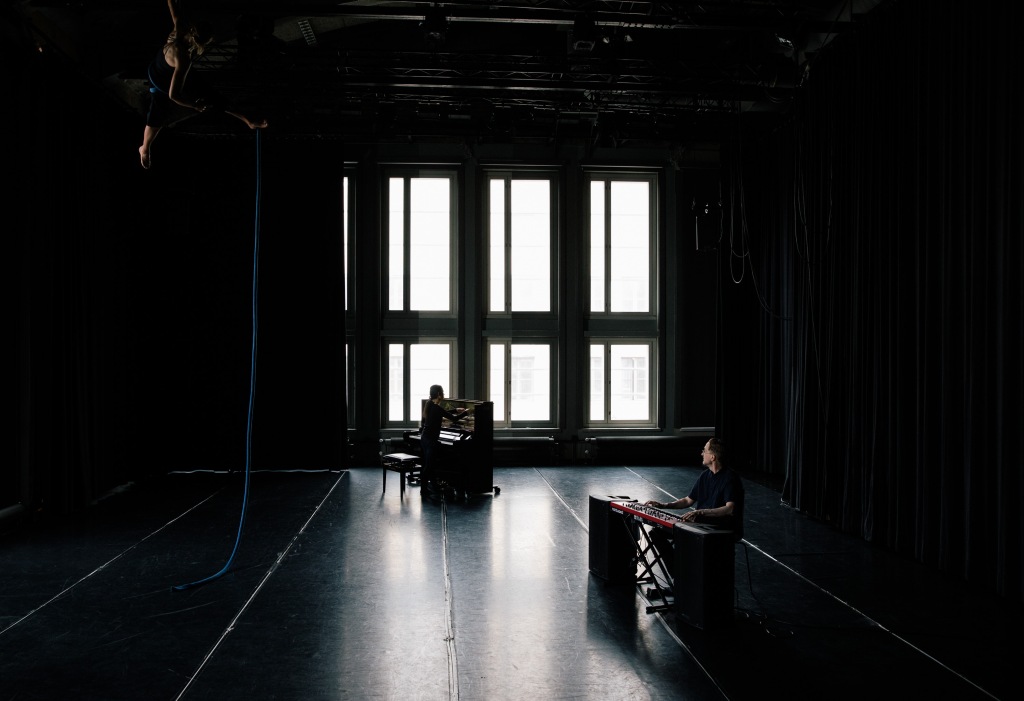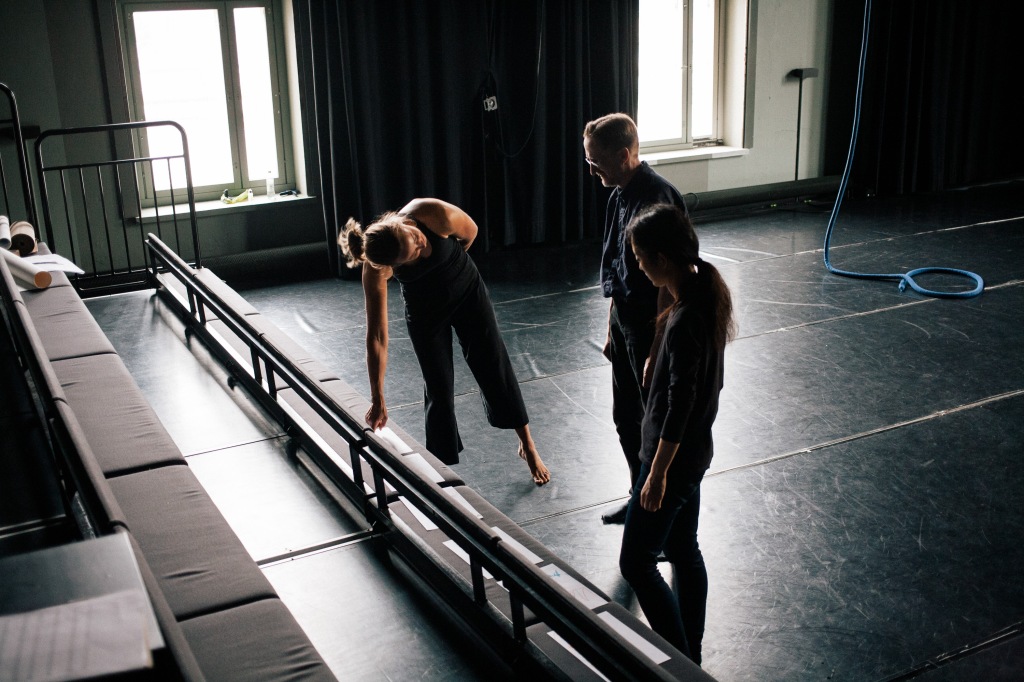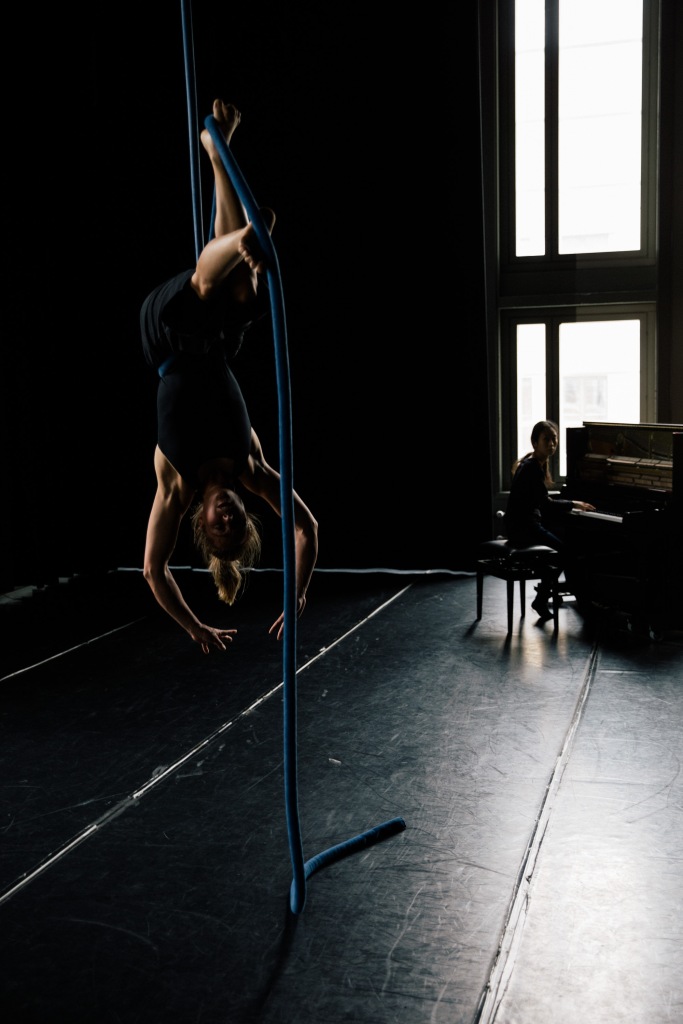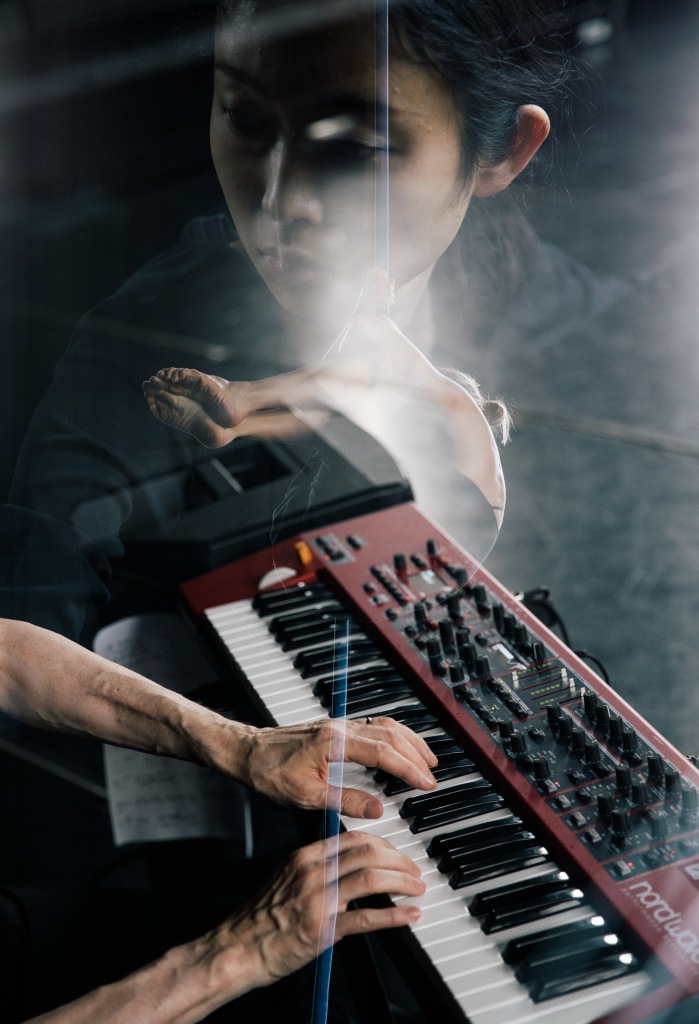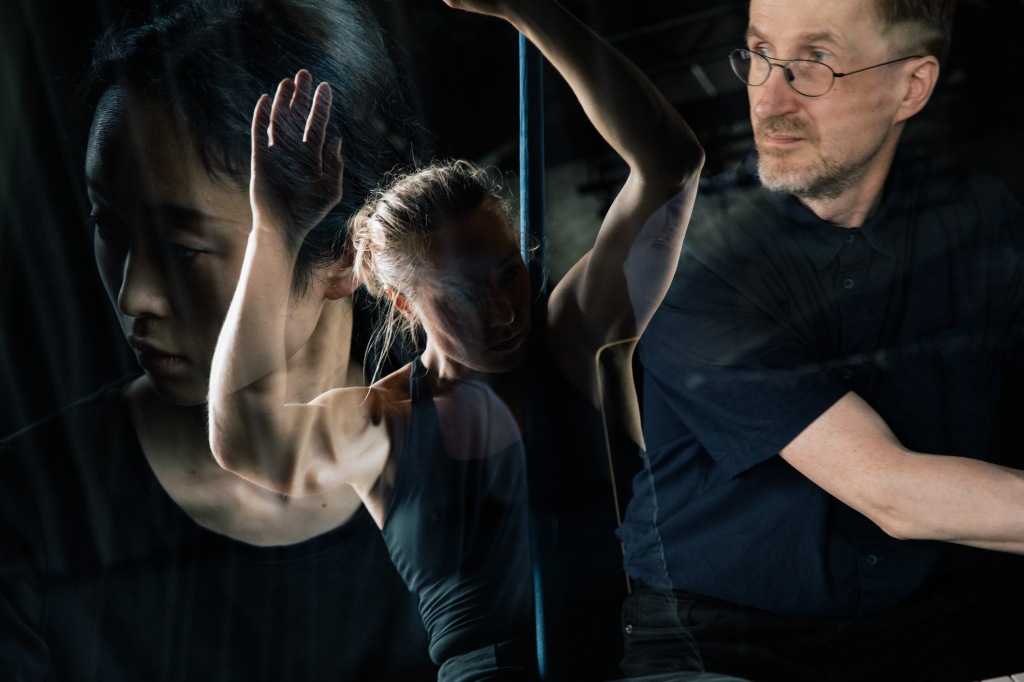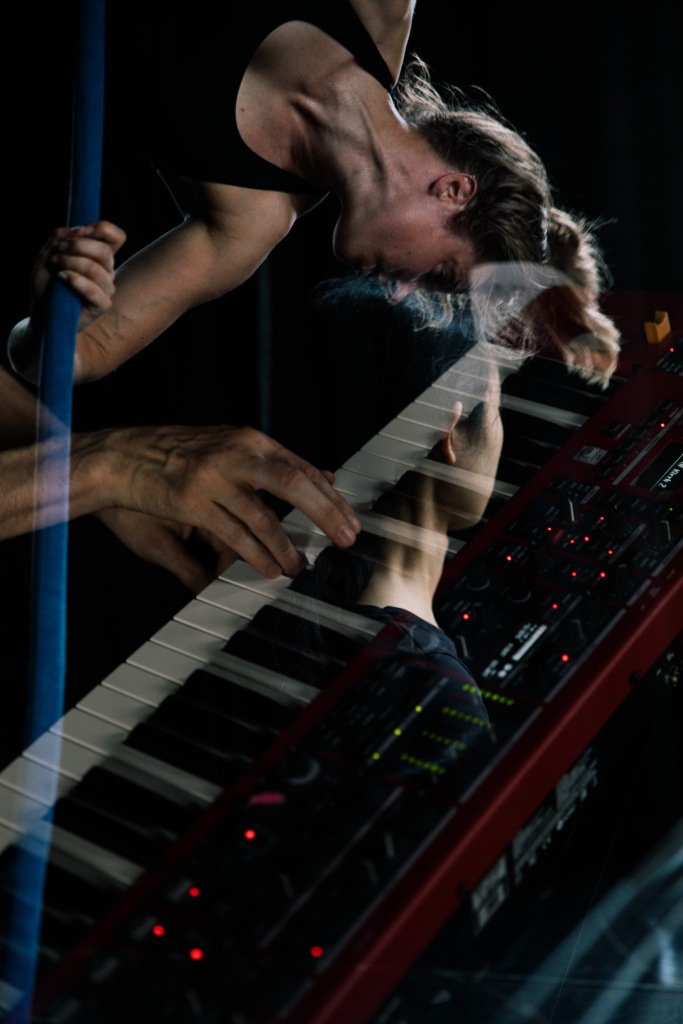Between the years 2018-2021 I had a possibility to be involved in the Academy of Artistic Thinking, which was a three-year project organized by Cirko – Center for New Circus in Helsinki, Finland, in collaboration with the Open Campus of the University of the Arts Helsinki. Its primary goal was to develop dramaturgical and critical thinking and bring artists from different disciplines of performative arts to learn together and from each other in a creative, constructive, dialogical, and relaxed atmosphere. There were almost 30 artists from theater, dance, contemporary circus, and music participating in this project.
During the Academy of Artistic Thinking I also collaborated with pianist Eriko Takahashi, who was very interested in hearing what we did during our periods, and followed our performance production KIERROT which was carried out as a remote festival because of the pandemic. During one discussion we ended up to preliminary plan on something collaborative, and while aerial acrobat Salla Hakanpää, who took also part in Academy of Artistic Thinking, was interested in this kind project combining circus art, fine art, and music, we started to make closer plans for a project under title Musica Aerea.
Musica Aerea is a collaborative project. The main idea of its creative process concentrates on researching different dimensional aspects between sound, movement and drawings. After lots of discussions and many written pages we succeeded to make a preliminary plan for this project. After few rounds of applying we were got a possibility for a working period in artistic residency of Cirko – Center of New Circus, and also Sasakawa Foundation from Tokyo gave us a grant to make this working period possible, and F-Musiikki offered us piano and synthesizer to be used in this project, so we were eager to start working in Suvilahti on 13th of June 2023 – and actually meet the first time in real between all three of us.
On the opening day we made some more detailed and practical planning concerning how to work during this two week period. We arranged our working space to suit our purposes, and also we took a little walk to see a few shops nearby to get some accessories we’d need in our project. And of course a little warm-up to get a feel for how our project might work.
One of the main procedures we had planned for our work was to cycle material between all three of us and thus create it together, so as to make it our common one, but still giving everyone a possibility to make it look like our own for each of us. Idea was to start with something composed, which would then be played and improvised on it, and used as a source for a drawing, and that drawing would then be a source for movement – which would then again serve as a source for a new composed section.
After getting started we did different practical experiments, following our written plans more or less accurately. We had some kind of plan for our experiments, like starting from the drawing or musical excerpt, and then improvising a solo, duo, or trio based on it, but we also made experiments with the idea that ‘let’s just do something and see what happens’. Also we had variable division of tasks concerning if it was just Eriko who was drawing, or if we all drew on our turn.
We also created short sessions based on time limits. Certain duration for the whole performance, or after a certain time something changes etc. They were also quite interesting experiments with several satisfying results and even convincing enough to be performed – and we certainly had fun!
Somewhere close to the midpoint of the residency period we discussed and looked back at what we’d done until that point. We agreed that actually doing things together, making conversations etc. is actually going quite well, but quite often the meaning of drawings appeared to be a little unclear. We noticed that the prevailing tension of the performance was easily reduced when one of us changes to drawing, which includes some kind of danger, but also a possibility while it can be used as defining different sections or new beginnings within the performance.
After these observations we gave more attention to drawing, how and when to enter the drawing-section, and also if we draw at all. We combined it with sessions consisting of several movements as marking a new section to begin, or used it as a tool for adjusting the level of tension. At the same time we created many experiments with different locations of instruments, duos, solos, with or without drawing.
During the last days we also had a photo shooting session, when Johannes Romppanen with his son Emil visited us with their cameras, and acted also as our audience when we performed our show to them. We got very valuable feedback – and of course many great photos.
On the last working day, after making the final 30-minutes session, we had our own closing discussion, in which we considered what went well and what aspects still need to be refined. More focus should be given on how to start or end a performance, how to increase contrasts, sudden changes and interruptions, and give more focus to dramaturgy in general, and also clarify the role of drawings, are they for material only or also for the audience. One aspect to consider is also the dominance of synthesizer, it guides quite strongly the general atmosphere – unless used for effects only.
But these are all questions which just have to be decided, at the same time we noticed that we wouldn’t need so much time anymore to create the public performance.
The residency itself was invaluable. We got plenty of experience which wouldn’t be possible to achieve without common working time, also we now know how we have to refine our plan to create the show for the audience.
We would also like to give a big thank you to our supporters and sponsors, Scandinavia Japan Sasakawa Foundation, Cirko – Center for New Circus, and F-Musiikki, without their support this project wouldn’t have been possible.
Musica Aerea working group:
Salla Hakanpää – aerial acrobat
Eriko Takahashi – pianist
Ari Romppanen – composer
Thank you:




